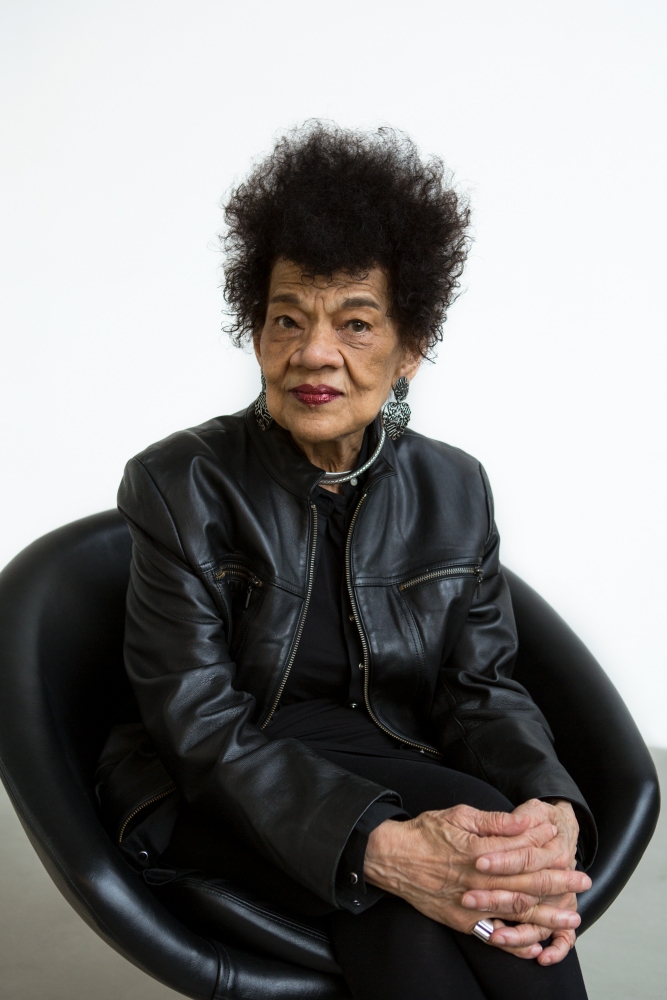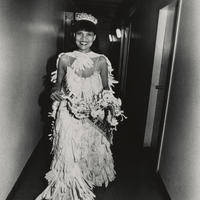More about Lorraine O'Grady
Works by Lorraine O'Grady

Sr. Contributor
Before Lorraine O’Grady went into the arts, she graduated from Wellesley with a degree in economics and worked as an intelligence analyst, translator, and rock music critic.
Lorraine O’Grady is an conceptual artist who works in progressive mediums such as collage, photomontage, video, and performance. The title of her 2021 retrospective at the Brooklyn Museum, Both/And, encompasses the intersectional nature of her work which combines image and word to address the hierarchies of gender, race, and class. Her work is influenced by the futurist and surrealist manifestos that expressed artistic philosophies for changing the world. Prior to Both/And, her work was also featured in Wack! Art and the Feminist Revolution.
O’Grady grew up in a middle-class family in Boston, and was the daughter of immigrants from Jamaica. An intersectional feminist, she saw the art scene as elitist and wanted to make a change through invasion, as she did quite literally in the party-crashing performance as her alter ego, the beauty queen Mademoiselle Bourgeoise Noire. The mission of her work is to challenge either/or thinking and to deconstruct binaries as a “meditation on the power of nuance, equity, and inclusion.” She has written for the feminist journal Heresies, and also spent several years as a member of the Guerrilla Girls
In her 1994 essay “Olympia’s Maid: Reclaiming Black Female Subjectivity”, O'Grady examines the figure of the Black maid in Edouard Manet's famous Olympia and “the construction of the not-white woman as not-to-be-seen.” She writes that the figure of the maid functions as “their chiaroscuro, to cast the difference of white men and white women in sharper relief.” O’Grady declares that Black women must be free to represent themselves in their own terms, writing, “First we must acknowledge the complexity, and then we must surrender to it.”
O’Grady’s work is largely a response to the flattening of Black identity to prevent the entry of Black people into the middle class, saying, “I was feeling that I was invisible not just to white people, but to Black people, and the purpose of this invisibility was the very purpose of segregation itself.” By challenging these hierarchies, her work seeks to acknowledge the complexities in ourselves and our culture, by creating a dialogue through her performances. She has also self-archived much of her work, often feeling that her art was intended for a future audience.
Most recently, O’Grady’s work Art Is…, a performance at the September 1983 African-American Day Parade in Harlem, has reentered public consciousness in a post-election ad by the Biden-Harris campaign. The photographs taken at the event of people posing with an ornate gilded frame has also been recreated at the Met Gala by actress Tracee Ellis Ross in 2019.
Sources
- “‘Comeback? I Haven’t Ever Been There’: Artist Lorraine O’Grady on Why Her Retrospective, at age 86, Feels Like Her First Big Break.” ArtNet News. March 29, 2021. https://news.artnet.com/the-big-interview/lorraine-o-grady-interview-19….
- George, Cassidy. “Lorraine O’Grady’s First-Ever Retrospective Honors Her 40-Year Fight for Inclusion.” Vogue. March 4, 2021. https://www.vogue.com/article/lorraine-ogrady-retrospective-brooklyn-mu….
- Guadagnino, Kate. “Both Sides Now: In Conversation with Lorraine O’Grady.” NY Times. Feb 22, 2021. Updated March 1, 2021. https://www.nytimes.com/2021/02/22/t-magazine/lorraine-ogrady-retrospec….
- “Lorraine O’Grady.” Studio Museum. Accessed December 21, 2021. https://www.studiomuseum.org/exhibition/lorraine-ogrady-art.
- Mitter, Siddhartha. “Lorraine O’Grady, Still Cutting Into the Culture.” The New York Times. February 19, 2021. https://www.nytimes.com/2021/02/19/arts/design/lorraine-ogrady-brooklyn….
- O’Grady, Lorraine. “Olympia’s Maid: Reclaiming Black Female Subjectivity.” lorraineogrady.org. 1992. https://lorraineogrady.com/wp-content/uploads/2015/11/Lorraine-OGrady_O…
Featured Content
Here is what Wikipedia says about Lorraine O'Grady
Lorraine O'Grady (September 21, 1934 – December 13, 2024) was an American artist, writer, translator, and critic. Working in conceptual art and performance art that integrates photo and video installation, she explored the cultural construction of identity – particularly that of Black female subjectivity – as shaped by the experience of diaspora and hybridity. O'Grady studied at Wellesley College and the University of Iowa Writers' Workshop before becoming an artist at the age of 45. Regarding the purpose of art, O'Grady said in 2016: "I think art's first goal is to remind us that we are human, whatever that is. I suppose the politics in my art could be to remind us that we are all human."
Check out the full Wikipedia article about Lorraine O'Grady











